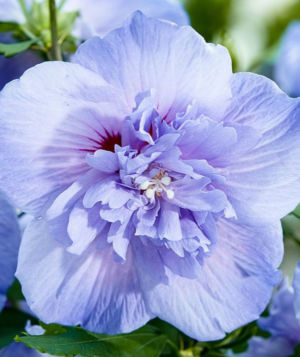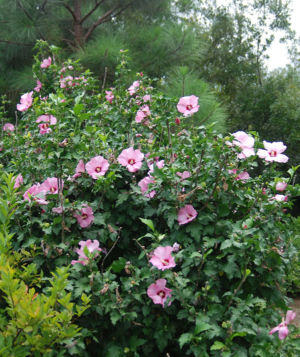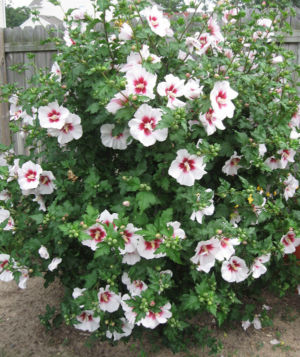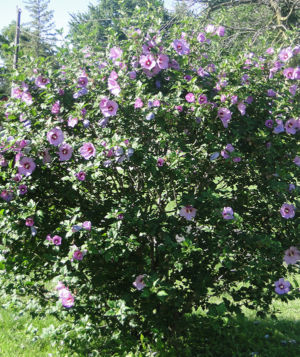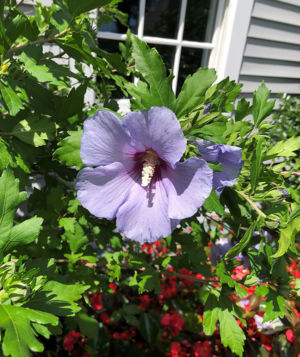Rose of Sharon – Hibiscus syriacus
Description
General: Rose of Sharon also known as shrub althea is native to eastern Asia in India and China. It is a multi-stemmed, upright shrub that grows 8-12′ in a vase-shape.
Leaves: Green, palmately-veined leaves are three-lobed and coursely-toothed to about 4′ long.
Flowers: Showy, five-petaled flower (some are double flower) looks tropical, and appears mid-late summer lasting into the fall. Color will vary depending on variety, whites, blues, or pinks.
Seed: Seed pods can persist into the winter months
Bark: Gray
Attributes: A tropical looking flower on a vigorous growing shrub can produce many flowers in the summer. Can be pruned hard and shaped into hedges or trained into a single stem tree. They attract pollinators, butterflies and hummingbirds.
Culture
Hardiness: Zones 5- 8.
Growing Conditions: Grows well in average, well-drained soils in full sun to part shade but flowers best in full sun. Can tolerate poor soil and some drought conditions.
Maintenance: With its suckering growth pruning is encouraged to maintain good structure. Older, long canes can be susceptible to failure under heavy snow loads. Will tolerate heavy pruning in late winter/early spring for shape and structure and flowers on new wood.
Transplanting: No issues transplanting in spring or fall, summer transplanting may effect flowering for that season.
Our Experience
Experience at Great Hill
Generally we do not see many issues with our Rose of Sharon’s. They do require some maintenance pruning to keep their size and health in check. Common fungal issues are leaf spot and rust. Insect pests we have seen are Japanese beetle, aphid and some cottony scale. They are a beautiful plant when in full bloom.
Hibiscus Bloom Data
| Year | Bud Break | Full Bloom | Bloom Drop |
|---|---|---|---|
| 2020 | July 23 | July 30 | September 10 |
| 2021 | July 13 | August 1 | September 3 |
| 2022 | July 12 | July 20 | August 29 |
| 2023 | July 17 | July 29 | September 8 |

